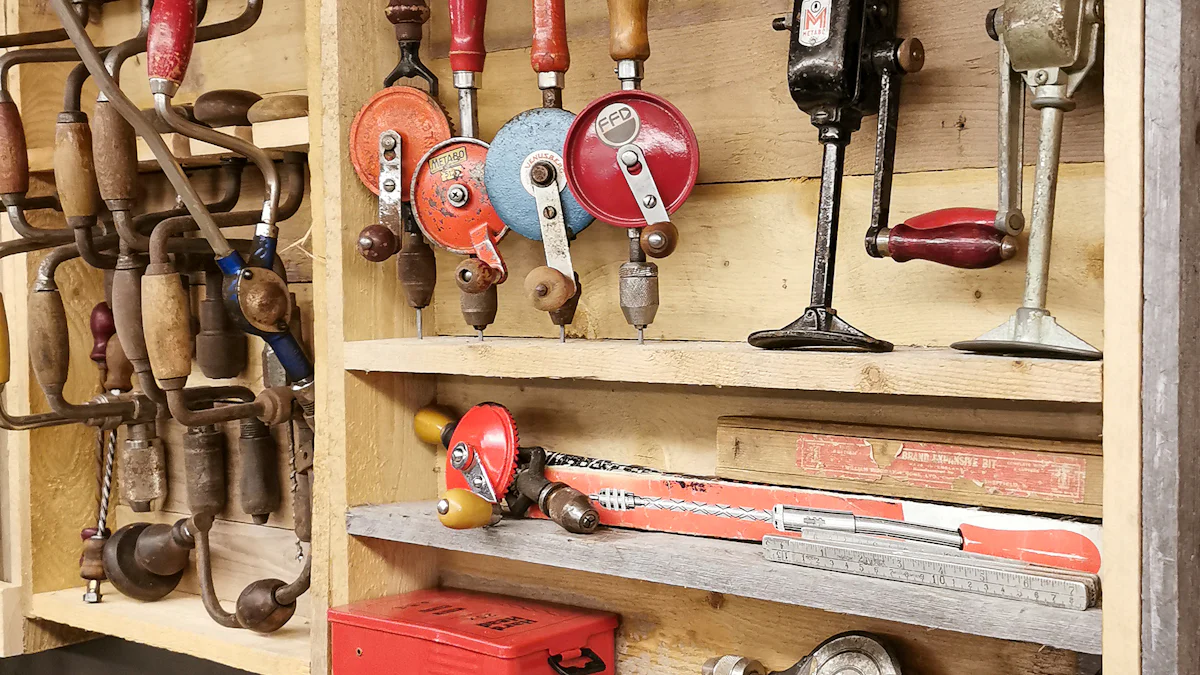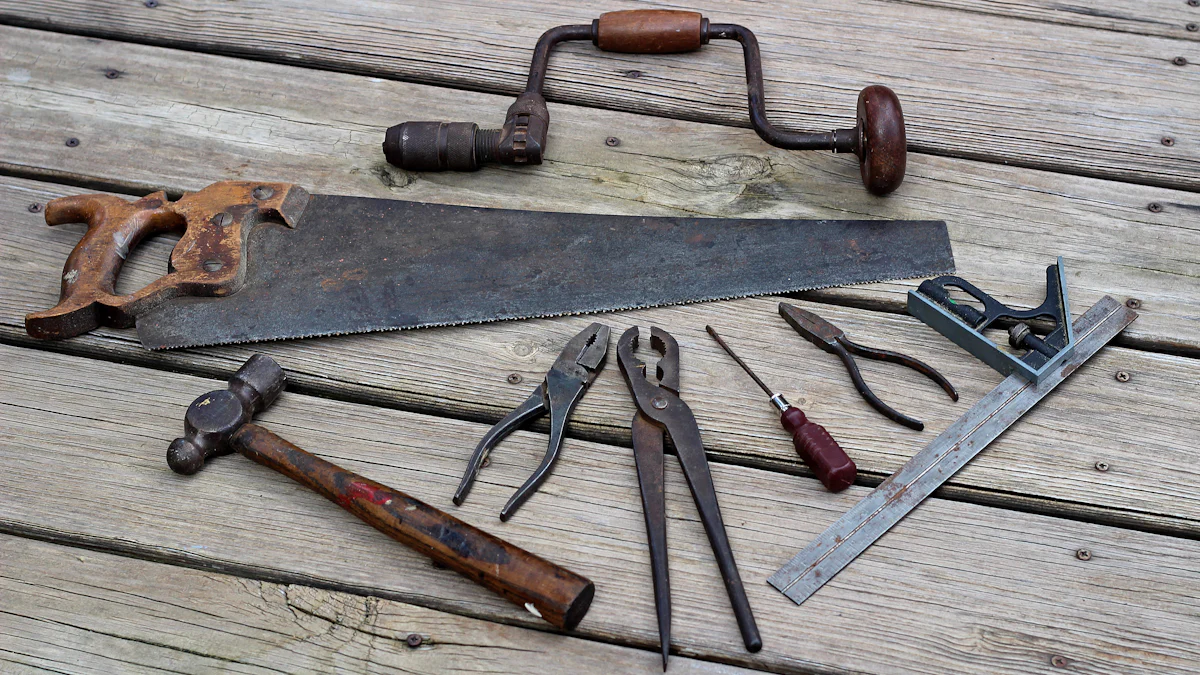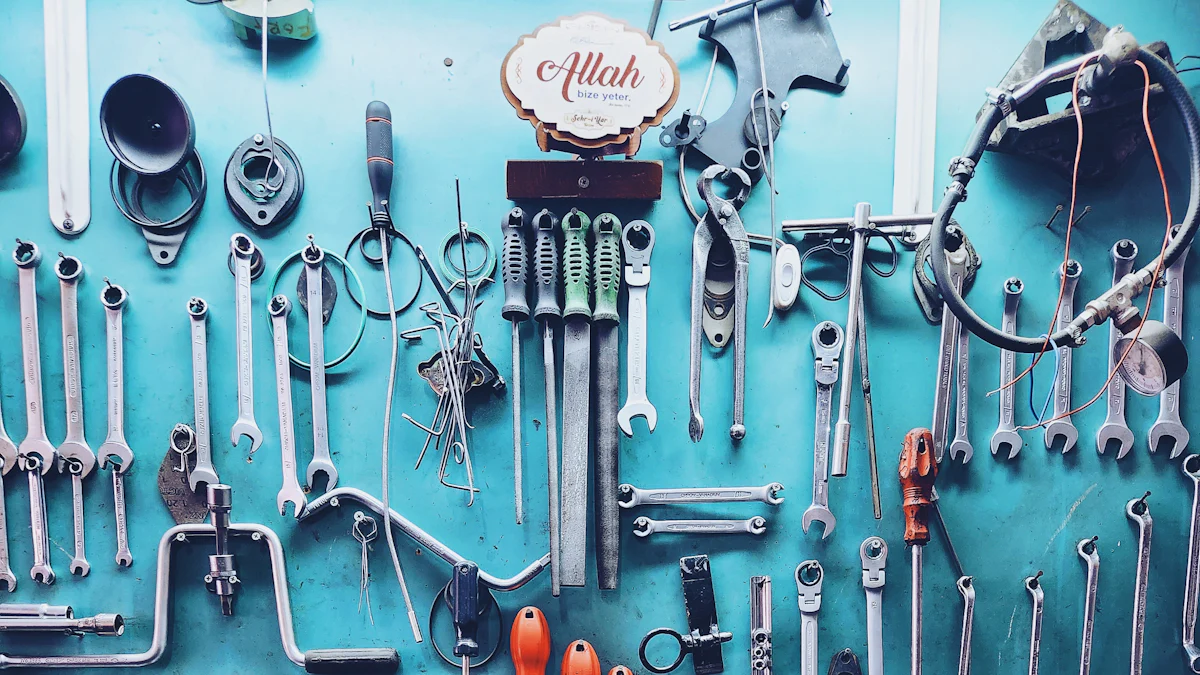
Maintaining tools, especially hand tools, is crucial for their longevity and performance. Regular care ensures that hand tools remain in prime condition, ready for any task. Proper maintenance extends the lifespan of tools, saving money in the long run. Clean tools after each use to remove dirt, grease, and residues. Store tools in a dry, climate-controlled environment to prevent rust and dullness. Regular inspections help identify signs of wear and tear early. By following these practices, hand tools will serve faithfully for decades.
Cleaning Your Hand Tools

Regular Cleaning Routine
Daily Cleaning Tips
Daily cleaning keeps tools in optimal condition. Wipe down each tool with a clean, dry cloth after use. This removes dust and moisture. For tools with plastic handles, such as pliers or screwdrivers, use mild cleaning agents. A soft cloth or sponge with mild soapy water works well. Avoid harsh chemicals that can damage the handles.
Weekly Deep Cleaning
Weekly deep cleaning ensures thorough maintenance. Use a brush or compressed air to remove debris from hard-to-reach areas. For tools that come into contact with soil, like spades and trowels, hose off the dirt. Dry the tools with a cotton rag before storage. This prevents rust and prolongs the life of the tools.
Cleaning Different Types of Tools
Metal Tools
Metal tools require specific care. Use a soft cloth to wipe off any debris and moisture. For stubborn dirt, use a mild degreaser. Chrome polish can restore the shine of polished metal surfaces. Regular cleaning prevents rust and maintains performance.
Wooden Handled Tools
Wooden handled tools need gentle cleaning. Wipe the handles with a damp cloth. Avoid soaking the wood to prevent swelling and cracking. Apply a light coat of linseed oil to keep the wood conditioned. This maintains the integrity and appearance of the handles.
Specialty Tools
Specialty tools, like power tools, need careful cleaning. Use a brush to remove sawdust and debris from blades and other parts. An air compressor can blow out vents and exhausts. This keeps the tools functioning efficiently. Regular cleaning ensures safety and longevity.
Proper Storage Techniques

Proper storage techniques play a crucial role in maintaining the condition of hand tools. Storing tools correctly prevents rust, damage, and safety risks.
Choosing the Right Storage
Selecting the appropriate storage solution ensures that tools remain organized and protected.
Toolboxes
Toolboxes offer a portable and secure option for storing hand tools. Metal or plastic toolboxes provide durability and protection from external elements. Compartments within toolboxes help keep tools organized and easily accessible.
Wall Racks
Wall racks provide an efficient way to store tools while saving floor space. Mounting tools on wall racks keeps them visible and easy to reach. This method works well for frequently used tools, ensuring quick access and reducing clutter.
Shelving Units
Shelving units offer ample storage space for various tools. Adjustable shelves accommodate different sizes and types of tools. Placing tools on shelves keeps them off the ground, preventing moisture exposure and potential damage.
Organizing Your Tools
Organizing tools enhances efficiency and prolongs their lifespan. A systematic approach to organization ensures that tools are easy to find and maintain.
Categorizing Tools
Categorizing tools by type or function simplifies the organization process. Grouping similar tools together makes it easier to locate the right tool for each task. For example, store all screwdrivers in one section and pliers in another.
Labeling and Inventory
Labeling tools and storage areas improves organization and accountability. Use labels to identify tool categories and specific tools. Maintaining an inventory list helps track tool usage and identify missing items. Regularly updating the inventory ensures that all tools are accounted for and in good condition.
Regular Maintenance Practices
Regular maintenance ensures that tools hand tools perform optimally and last longer. Lubrication, oiling, sharpening, and honing are essential practices.
Lubrication and Oiling
Lubrication reduces friction and prevents wear on moving parts. Proper oiling keeps tools hand tools in prime condition.
Types of Lubricants
Different lubricants suit various tools hand tools. Light machine oil works well for general lubrication. Silicone spray provides a non-greasy option. Grease suits heavy-duty tools hand tools. Always refer to the manufacturer’s recommendations.
How Often to Lubricate
Frequency of lubrication depends on tool usage. Regularly used tools hand tools need lubrication every few weeks. Less frequently used tools hand tools require oiling every few months. Always clean tools hand tools before applying lubricants.
Sharpening and Honing
Sharpening restores the cutting edge of tools hand tools. Honing refines and maintains sharpness. Both practices ensure efficient performance.
Tools That Need Sharpening
Cutting tools hand tools like knives, chisels, and scissors require sharpening. Garden tools hand tools such as pruners and shears also need regular sharpening. Dull tools hand tools reduce efficiency and increase the risk of accidents.
Sharpening Techniques
Use a whetstone or sharpening stone for most tools hand tools. Hold the tool at the correct angle and move it across the stone. Repeat until a sharp edge forms. For serrated tools hand tools, use a specialized sharpener. Regular honing with a fine stone maintains sharpness.
Safety Measures
Using Tools Safely
Proper Handling
Proper handling of tools hand tools ensures safety and efficiency. Always use the correct tool for the job. Incorrect usage can lead to accidents and damage. Hold tools hand tools firmly and maintain a stable posture. Avoid using excessive force, which can cause slips or breaks. Keep hands dry and clean to prevent slipping. Follow manufacturer guidelines for each tool.
Protective Gear
Wearing protective gear reduces the risk of injury. Safety goggles protect eyes from debris and splinters. Gloves provide a better grip and shield hands from sharp edges. Use ear protection when operating loud tools hand tools. Wear a dust mask when working with materials that produce fine particles. Sturdy footwear prevents foot injuries from falling objects.
Inspecting Tools for Damage
Signs of Wear and Tear
Regular inspections help identify signs of wear and tear. Look for cracks, chips, or rust on metal parts. Check wooden handles for splits or looseness. Inspect moving parts for smooth operation. Worn-out tools hand tools can fail unexpectedly, causing accidents. Replace or repair damaged tools hand tools promptly.
When to Replace Tools
Knowing when to replace tools hand tools is crucial for safety. Replace tools hand tools that show significant wear or damage. Tools hand tools with broken handles or missing parts should not be used. Dull cutting tools hand tools pose a higher risk of injury. Regularly update your inventory to keep track of tool conditions. Ensure all tools hand tools meet safety standards before use.
Maintaining hand tools involves several key practices. Regular cleaning, proper storage, and consistent maintenance ensure optimal performance. Organizing tools by type and labeling storage areas enhances efficiency. Lubrication and sharpening keep tools in prime condition. Safety measures, including proper handling and protective gear, prevent accidents.
Implementing these practices will prolong the lifespan of hand tools. Regular maintenance leads to more efficient and productive hours in various tasks. Investing time in tool care saves money and ensures readiness for any project. Proper tool maintenance remains essential for achieving the best results.
See Also
Scooter Upgrades: High-Quality Parts for Maximum Performance
Winter Warmth: Cozy Socks and Towels for Ultimate Comfort
Dive into Diverse Sock Options for Both Genders
